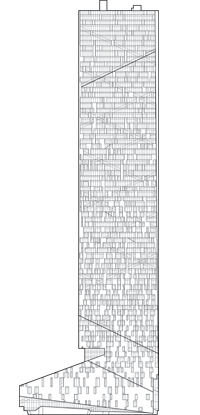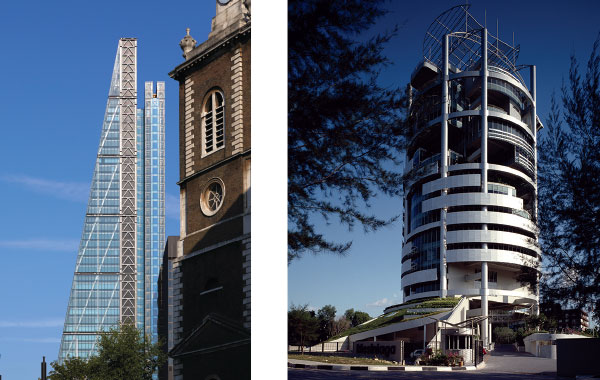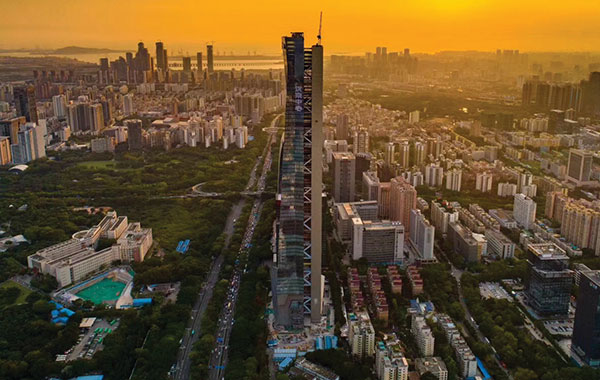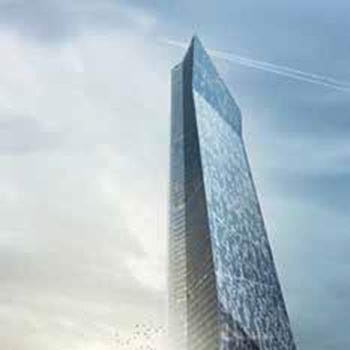Filter by
You must be a CTBUH Member to view this resource.

Hanking Center
Rolansberg Hanking Center
Building
Completed
2018
Office
Concrete-Steel Composite
LEED Core and Shell: Platinum
358.9 m / 1,177 ft
65
5
881
36
8 m/s
166,299 m² / 1,790,028 ft²
You must be a CTBUH Member to view this resource.
You must be a CTBUH Member to view this resource.
Proposed
Construction Start
Completed
The Design Engineer is usually involved in the front end design, typically taking the leadership role in the Schematic Design and Design Development, and then a monitoring role through the CD and CA phases.
The Design Engineer is usually involved in the front end design, typically taking the leadership role in the Schematic Design and Design Development, and then a monitoring role through the CD and CA phases.
The main contractor is the supervisory contractor of all construction work on a project, management of sub-contractors and vendors, etc. May be referred to as "Construction Manager," however, for consistency CTBUH uses the term "Main Contractor" exclusively.
Other Consultant refers to other organizations which provided significant consultation services for a building project (e.g. wind consultants, environmental consultants, fire and life safety consultants, etc).
Material Supplier refers to organizations which supplied significant systems/materials for a building project (e.g. elevator suppliers, facade suppliers, etc).
You must be a CTBUH Member to view this resource.
Usually involved in the front end design, with a "typical" condition being that of a leadership role through either Schematic Design or Design Development, and then a monitoring role through the CD and CA phases.
Usually takes on the balance of the architectural effort not executed by the "Design Architect," typically responsible for the construction documents, conforming to local codes, etc. May often be referred to as "Executive," "Associate," or "Local" Architect, however, for consistency CTBUH uses the term "Architect of Record" exclusively.
The Design Engineer is usually involved in the front end design, typically taking the leadership role in the Schematic Design and Design Development, and then a monitoring role through the CD and CA phases.
The Engineer of Record takes the balance of the engineering effort not executed by the “Design Engineer,” typically responsible for construction documents, conforming to local codes, etc.
The Design Engineer is usually involved in the front end design, typically taking the leadership role in the Schematic Design and Design Development, and then a monitoring role through the CD and CA phases.
The Engineer of Record takes the balance of the engineering effort not executed by the “Design Engineer,” typically responsible for construction documents, conforming to local codes, etc.
The CTBUH lists a project manager when a specific firm has been commissioned to oversee this aspect of a tall building’s design/construction. When the project management efforts are handled by the developer, main contract, or architect, this field will be omitted.
The main contractor is the supervisory contractor of all construction work on a project, management of sub-contractors and vendors, etc. May be referred to as "Construction Manager," however, for consistency CTBUH uses the term "Main Contractor" exclusively.
Other Consultant refers to other organizations which provided significant consultation services for a building project (e.g. wind consultants, environmental consultants, fire and life safety consultants, etc).
These are firms that consult on the design of a building's façade. May often be referred to as "Cladding," "Envelope," "Exterior Wall," or "Curtain Wall" Consultant, however, for consistency CTBUH uses the term "Façade Consultant" exclusively.
Material Supplier refers to organizations which supplied significant systems/materials for a building project (e.g. elevator suppliers, facade suppliers, etc).
2021 CTBUH Awards
2021 CTBUH Awards
2019 CTBUH Awards
5 December 2018 - Awards
17 January 2018 - CTBUH News

25 April 2019
Dr. Philip Oldfield, UNSW Sydney; Bronte Doherty, BVN Architecture
This research explores the trends, drivers and frequency of offset cores in the world’s tallest buildings. It charts the history of tall building layouts, exploring...
Hanking Center adds a new dimension to Shenzhen’s skyline. It reconsiders the conventional commercial office building through an innovative approach to circulation, social systems, and workspaces. The tower is comprised of office space, with high-end retail and dining options in the podium. The Center utilizes folded angles to elegantly merge public components in the podium with private commercial space in the tower. A grand plaza and hardscape around the exterior serves to anchor the new landmark and encourage activity nearby.
The tower’s unique steel structural system offsets the primary movement and service cores to the exterior of the floor plate. Shadowing the offset circulation core, two secondary cores in the body provide structural reinforcement. A series of sky bridges and diagonal mega-braces connect the offset core to the main tower. Special horizontal ties and slab diaphragm bracing were provided where the columns on the south face “kinked” to tie the necessary stabilizing forces to the tower’s overall lateral load resisting system. Extensive wind tunnel testing as well as non-linear performance based seismic design studies were conducted to verify the performance of the tower. Five communal skygardens, glazed lobbies, and a sunny atrium in the building’s core serve to connect separate elements of the building, and provide a communal hub for tenants. Circulation and amenity areas gain natural light and views over the city to create a vibrant public space.
As a new icon for the growing high-tech zone in the Nanshan neighborhood, the Hanking Center Tower was conceptualized to house emerging tech companies. The open floor plates, made possible by the tower’s offset core, greatly amplify the flexibility companies have in utilizing their space. In addition, this form allows for work environments with more natural light and better air circulation to enhance comfort, health, and productivity.
2021 CTBUH Awards
2021 CTBUH Awards
2019 CTBUH Awards

25 April 2019
Dr. Philip Oldfield, UNSW Sydney; Bronte Doherty, BVN Architecture
This research explores the trends, drivers and frequency of offset cores in the world’s tallest buildings. It charts the history of tall building layouts, exploring...

25 April 2019
CTBUH Research
There has long been an interest in separating the service cores of tall buildings from the main programmed areas – to create more column-free, easily-configured...
Vivien__Liu.jpg)
12 December 2018
CTBUH Research
The astronomical growth in tall building construction observed over the past decade continued in 2018, though the total number of completed buildings of 200 meters’...

26 October 2015
Ziguo Xu, Chongcui Ren & Congzhen Xiao, China Academy of Building Research
Using nonlinear time history analysis to investigate the seismic performance of tall building structures has been more widely implemented in recent years as china new...
5 December 2018
These projects will be represented at the CTBUH 2019 Tall + Urban Innovation Conference, where they will compete in real time for winning distinctions in each category.
17 January 2018
Check out all of our 2018 Tall Building Predictions, and dive into the full 2017 Tall Building Year in Review data report.
19 December 2016
Check out the Council on Tall Buildings and Urban Habitat's top stories of 2016 for each month and take a look ahead with the Council’s monthly predictions for 2017.
13 October 2016
The Council is pleased to announce the Top Company Rankings for numerous disciplines as derived from the list of projects appearing in 100 of the World’s Tallest Buildings.
Subscribe below to receive periodic updates from CTBUH on the latest Tall Building and Urban news and CTBUH initiatives, including our monthly newsletter. Fields with a red asterisk (*) next to them are required.
View our privacy policy